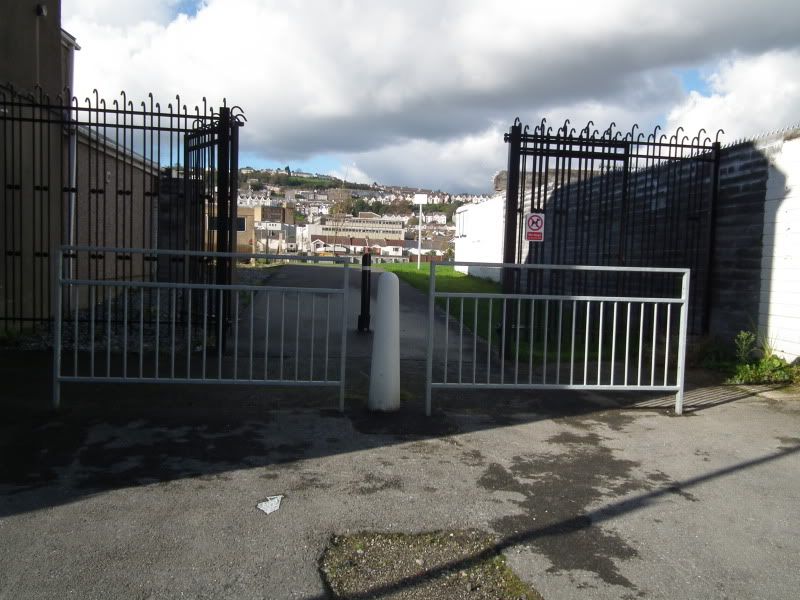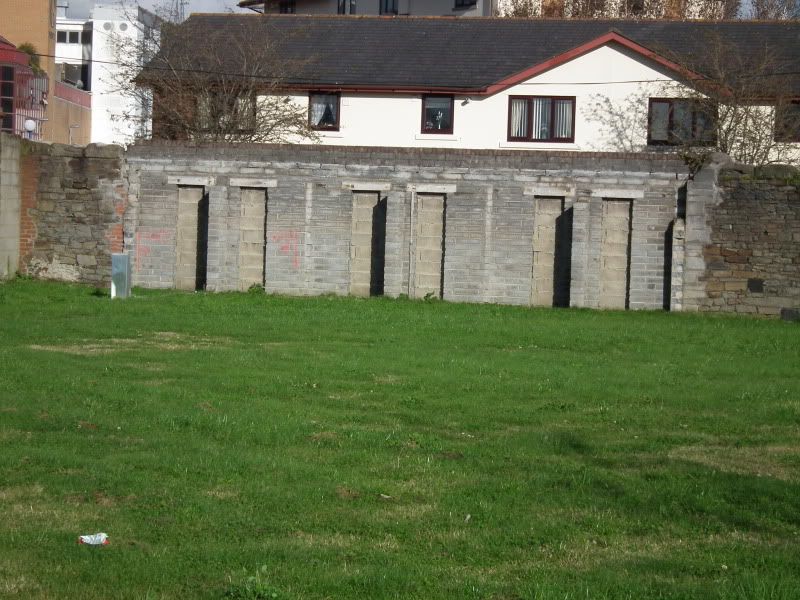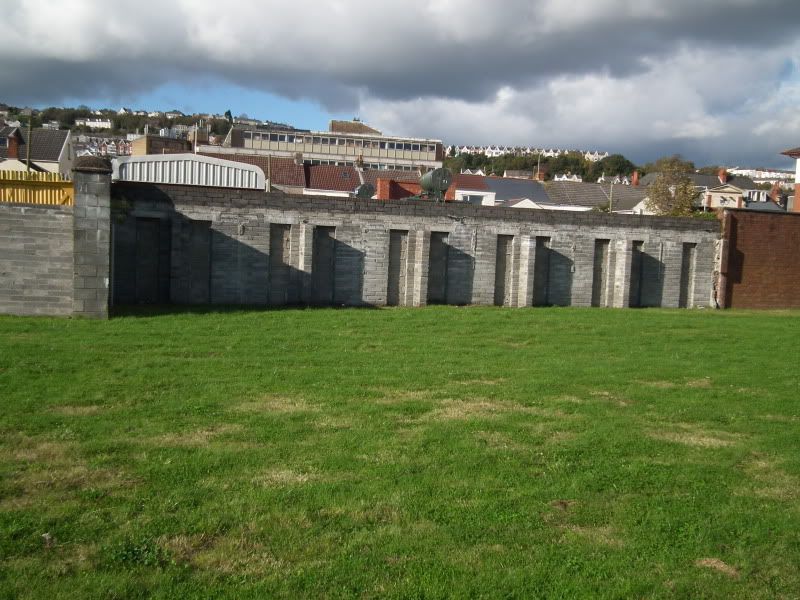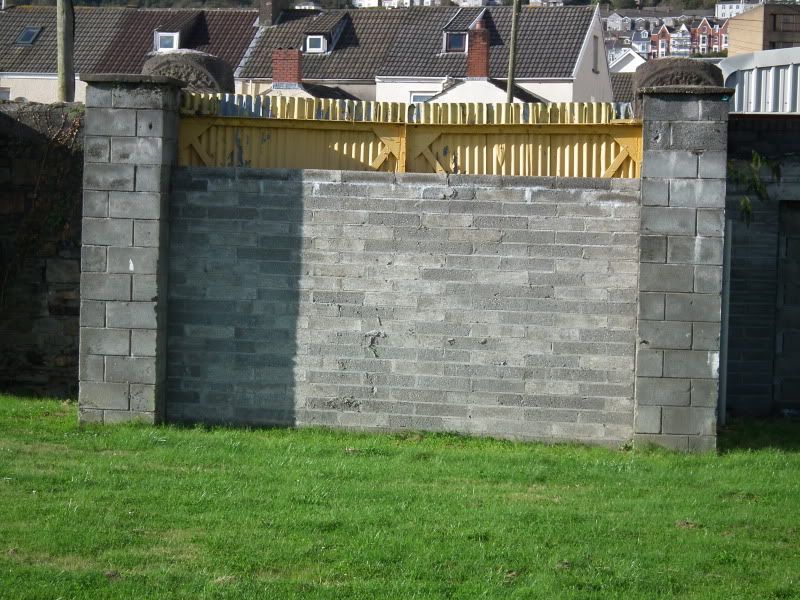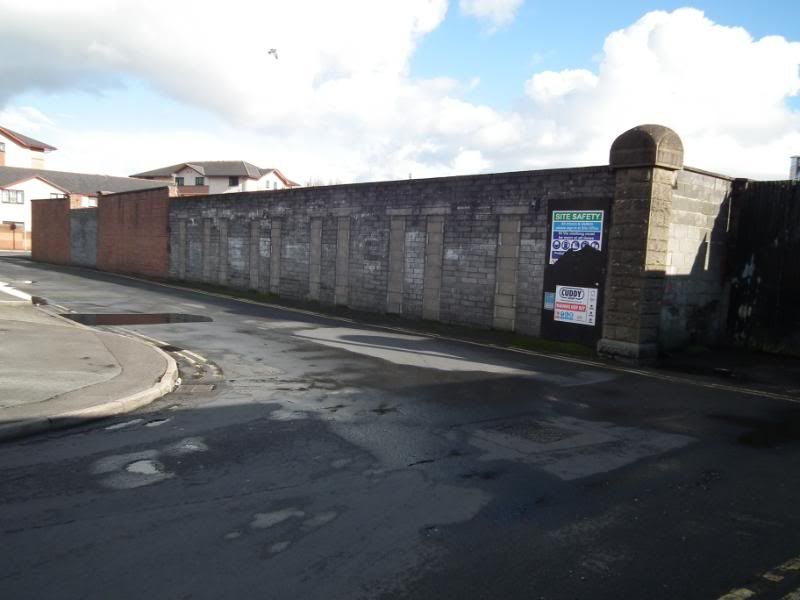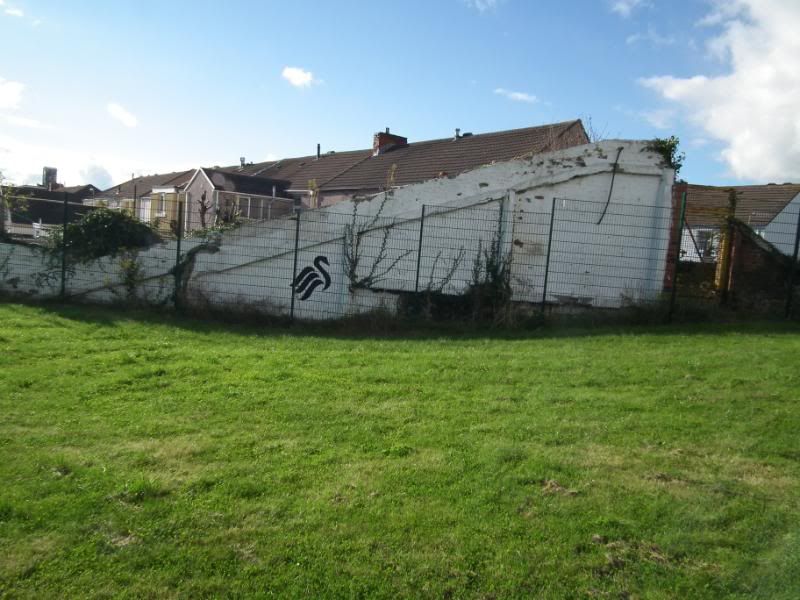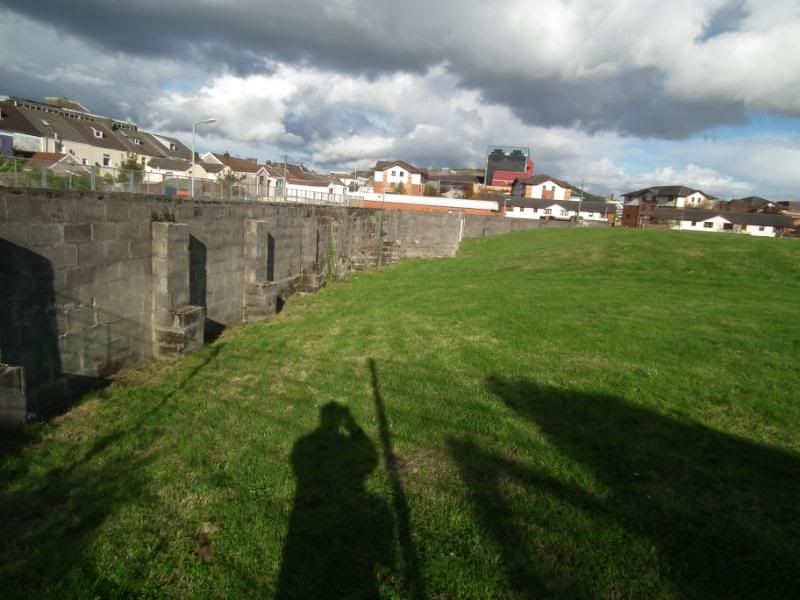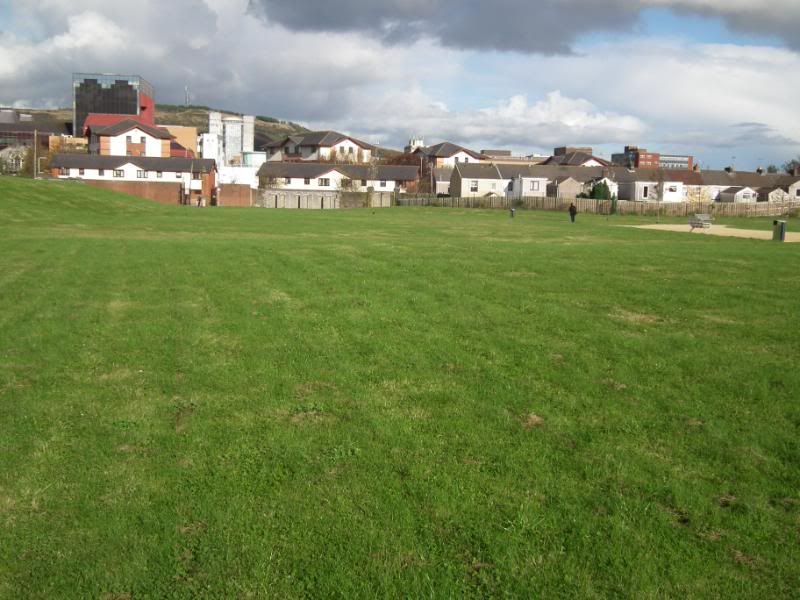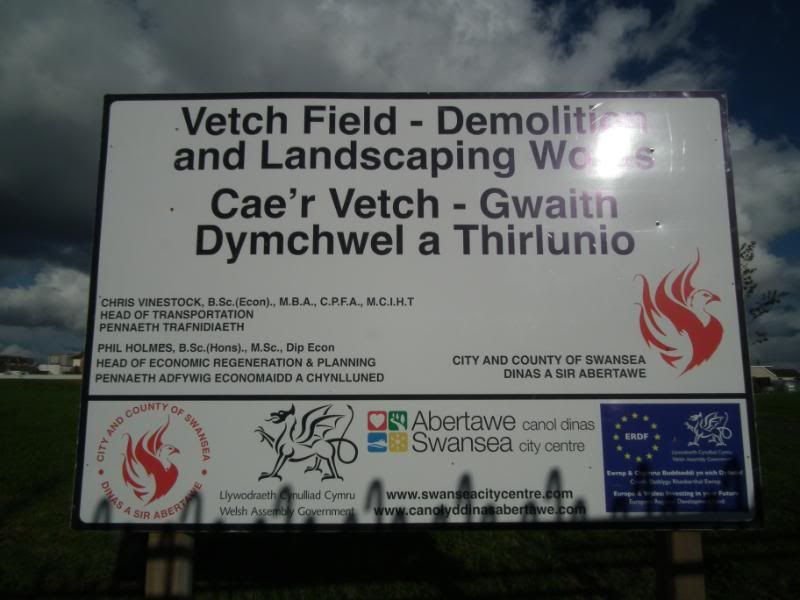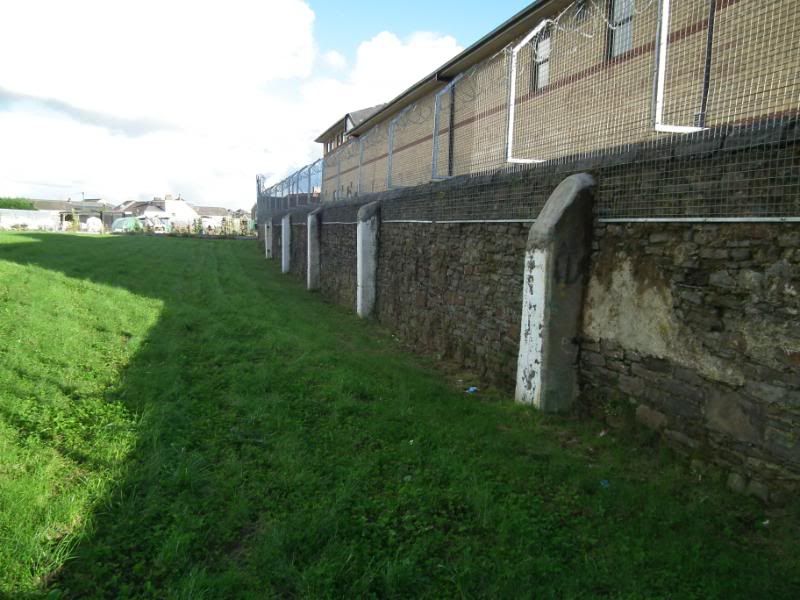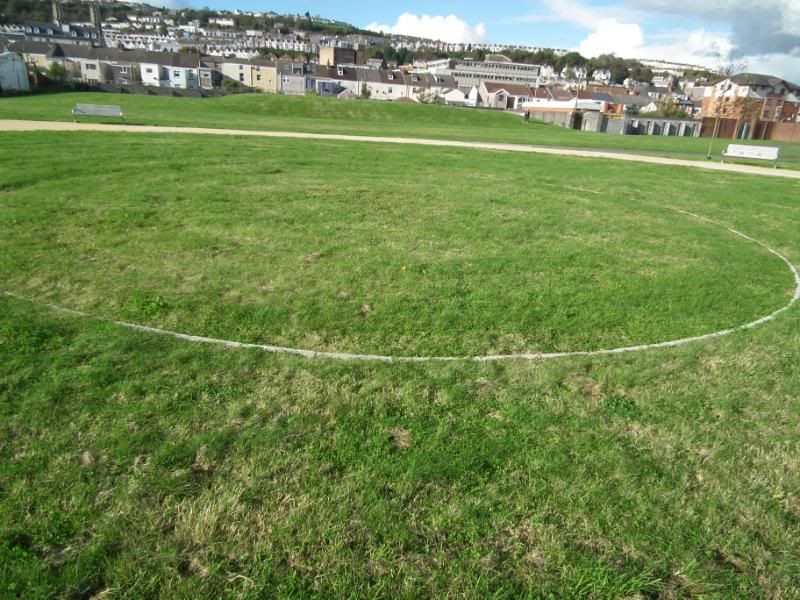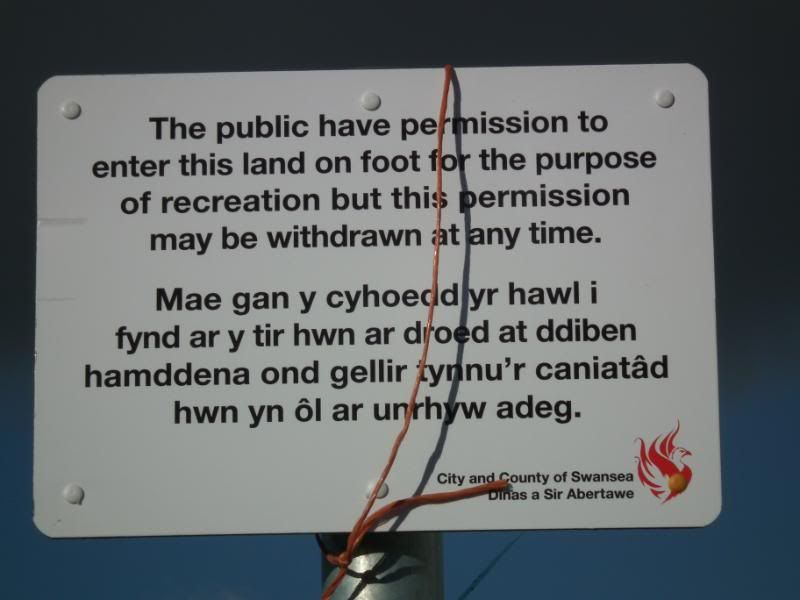Post by Dave on Oct 9, 2012 19:58:05 GMT
I may be wrong, but I thought last week our Jamesb said on the forum that the Vetch Field in Swansea was still standing.
I hope to be in Wales this weekend and if I do then it will only be the second time in my life, I have spent my birthday not on English soil. The only other time was in fact last year when Lyn and I spent a whole week staying at the Mumbles. Is it really a whole year ago since we spend that magic Sunday with Sturatb and his wife and those dear twins?
I asked Lyn where the ground was so I could be all prepared for Saturday, my plan was to let Lyn and her mum go into the town shopping, while I went and tried to get some pictures of the ground. But after doing some Internet searches I have discovered the ground has now been knocked to the ground.
I will still go and take a look on Saturday all being well and take what shots I can of how the site looks now the ground has completely gone.
This is from good old wilki, plus a few pictures I have found.
The Vetch Field was a multi-purpose stadium in Swansea, Wales. It was used mostly for football matches and was the home ground of Swansea City until the Liberty Stadium opened in 2005. Opened in 1912, the ground held around 12,000 at the time of its closure, but upwards of 30,000 at its peak. Adrian Forbes scored the last-ever league goal at the Vetch, on 30 April 2005, at Swansea's 1-0 win over Shrewsbury Town. The player who scored the final goal at the Vetch was Andy Robinson, who scored the winner in a 2-1 victory over Wrexham.
Named due to the vetch (a type of legume - not a cabbage as popularly misbelieved in most of south Wales) that was grown on its surface at the time, the site was owned by Swansea Gaslight Company in 1912, when a professional football team was formed in the town. The site was in a good location and deemed surplus to requirements at the Gas Company, so the club moved in. Originally, the surface was made of compacted coal cinder and players had to wear knee pads for the first season of football there. Having seen many changes during its 93 years (detailed below), the Vetch took its final bow with an FAW Premier Cup Final against Wrexham. After the game, the seats, turf, advertising hoardings and anything else fans could get their hands on were removed from the ground
On 23 May 2009, the ground was put onto the market after being replaced by the Liberty Stadium almost four years earlier.
Plans were originally made to build a community centre and housing development on the Vetch Field site but had not been put through. This includes a 120-unit housing development and a play area. The housing development would include two, three and four-storey homes. The streets would also be organised into safe but accessible “home zones” designed along communities in Holland where vehicle speeds would be restricted. Parts of the Vetch Field could also be included in the overall development in a public display, planned for what was the centre spot of the old stadium.
Swansea Council also hope tenders will be received for the development works this autumn and a preferred developer to be chosen by the start of next year. Meanwhile, Items of memorabilia at the Vetch Field, such as the stadium clock, have been transferred to Swansea Museum.
[edit] DemolitionDemolition work on the ground began on 31 January 2011. The work was predicted to last four to six months. The famous North Bank was the first stand to be pulled down.
Initially there was some controversy as to the whereabouts of the centre stand's clock - on arrival, the contractors noticed it was missing. It was later confirmed in the South Wales Evening Post that it was in the safe hands of a group of people angered by the Council's neglect of such Vetch relics as the clock.
As of May 2011 no full stands remain and all the floodlights have been removed, including the East Stand's unique, bizarre floodlight. By the beginning of June 2011, with the club promoted to the Premier League and passing what's left of the ground on a victory parade, work has begun on the outside walls of the old stadium.
The centre circle, however, will remain, as this is where people's ashes have been spread.
In August 2011 it was confirmed by Swansea Council that the Vetch would be used temporarily for allotments. Coordinated by local artist Owen Griffiths on the historic site of the Vetch Football field, an urban utopia is being created on the site, in collaboration with the local residents.

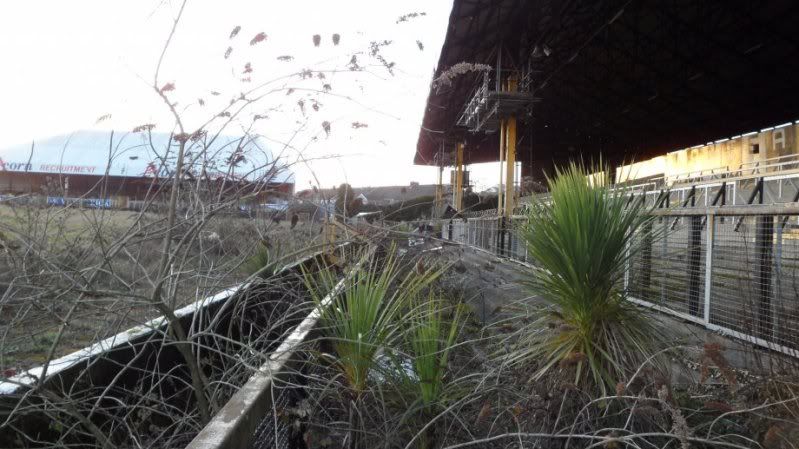
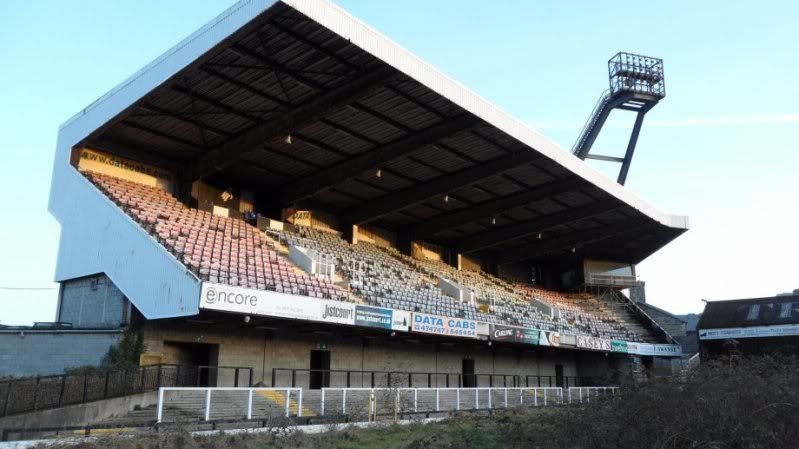

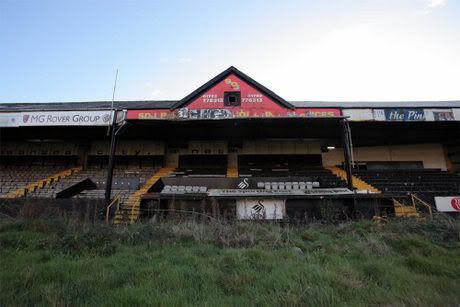
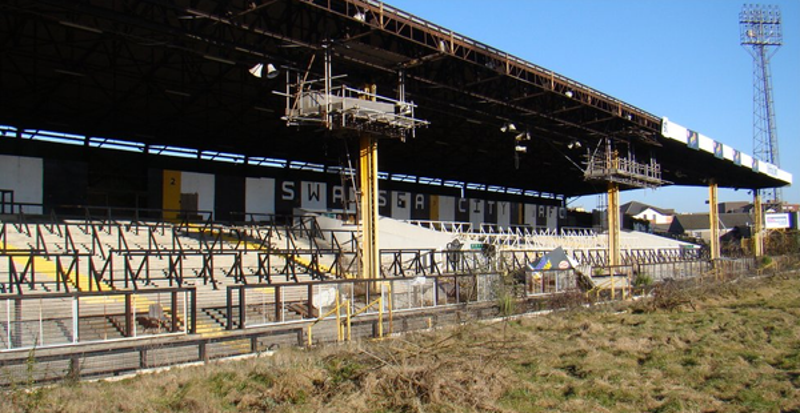


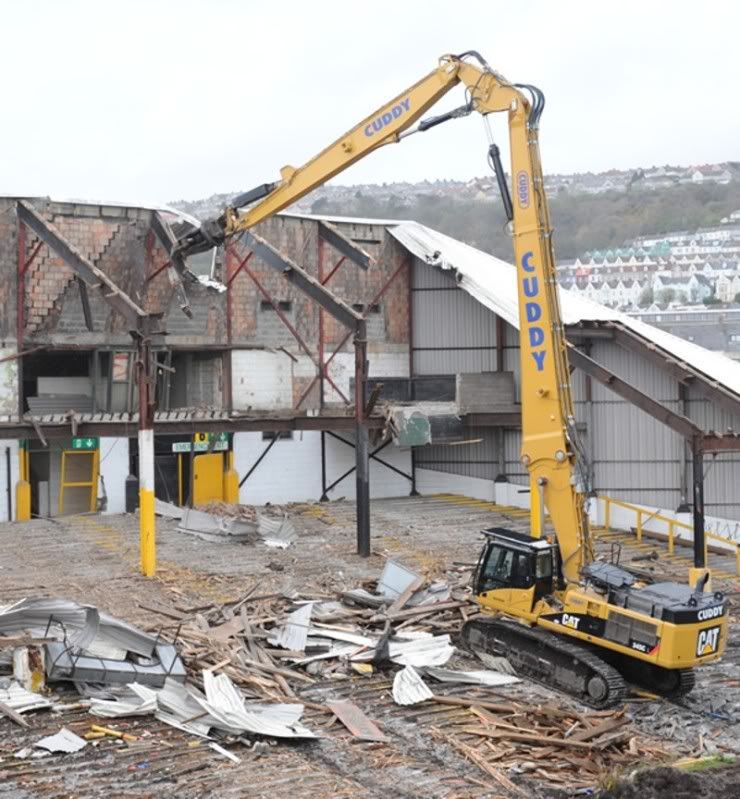

I hope to be in Wales this weekend and if I do then it will only be the second time in my life, I have spent my birthday not on English soil. The only other time was in fact last year when Lyn and I spent a whole week staying at the Mumbles. Is it really a whole year ago since we spend that magic Sunday with Sturatb and his wife and those dear twins?
I asked Lyn where the ground was so I could be all prepared for Saturday, my plan was to let Lyn and her mum go into the town shopping, while I went and tried to get some pictures of the ground. But after doing some Internet searches I have discovered the ground has now been knocked to the ground.
I will still go and take a look on Saturday all being well and take what shots I can of how the site looks now the ground has completely gone.
This is from good old wilki, plus a few pictures I have found.
The Vetch Field was a multi-purpose stadium in Swansea, Wales. It was used mostly for football matches and was the home ground of Swansea City until the Liberty Stadium opened in 2005. Opened in 1912, the ground held around 12,000 at the time of its closure, but upwards of 30,000 at its peak. Adrian Forbes scored the last-ever league goal at the Vetch, on 30 April 2005, at Swansea's 1-0 win over Shrewsbury Town. The player who scored the final goal at the Vetch was Andy Robinson, who scored the winner in a 2-1 victory over Wrexham.
Named due to the vetch (a type of legume - not a cabbage as popularly misbelieved in most of south Wales) that was grown on its surface at the time, the site was owned by Swansea Gaslight Company in 1912, when a professional football team was formed in the town. The site was in a good location and deemed surplus to requirements at the Gas Company, so the club moved in. Originally, the surface was made of compacted coal cinder and players had to wear knee pads for the first season of football there. Having seen many changes during its 93 years (detailed below), the Vetch took its final bow with an FAW Premier Cup Final against Wrexham. After the game, the seats, turf, advertising hoardings and anything else fans could get their hands on were removed from the ground
On 23 May 2009, the ground was put onto the market after being replaced by the Liberty Stadium almost four years earlier.
Plans were originally made to build a community centre and housing development on the Vetch Field site but had not been put through. This includes a 120-unit housing development and a play area. The housing development would include two, three and four-storey homes. The streets would also be organised into safe but accessible “home zones” designed along communities in Holland where vehicle speeds would be restricted. Parts of the Vetch Field could also be included in the overall development in a public display, planned for what was the centre spot of the old stadium.
Swansea Council also hope tenders will be received for the development works this autumn and a preferred developer to be chosen by the start of next year. Meanwhile, Items of memorabilia at the Vetch Field, such as the stadium clock, have been transferred to Swansea Museum.
[edit] DemolitionDemolition work on the ground began on 31 January 2011. The work was predicted to last four to six months. The famous North Bank was the first stand to be pulled down.
Initially there was some controversy as to the whereabouts of the centre stand's clock - on arrival, the contractors noticed it was missing. It was later confirmed in the South Wales Evening Post that it was in the safe hands of a group of people angered by the Council's neglect of such Vetch relics as the clock.
As of May 2011 no full stands remain and all the floodlights have been removed, including the East Stand's unique, bizarre floodlight. By the beginning of June 2011, with the club promoted to the Premier League and passing what's left of the ground on a victory parade, work has begun on the outside walls of the old stadium.
The centre circle, however, will remain, as this is where people's ashes have been spread.
In August 2011 it was confirmed by Swansea Council that the Vetch would be used temporarily for allotments. Coordinated by local artist Owen Griffiths on the historic site of the Vetch Football field, an urban utopia is being created on the site, in collaboration with the local residents.












 oooppps so sorry, we will always be special friends and we will meet up again soon I'm sure.
oooppps so sorry, we will always be special friends and we will meet up again soon I'm sure.
